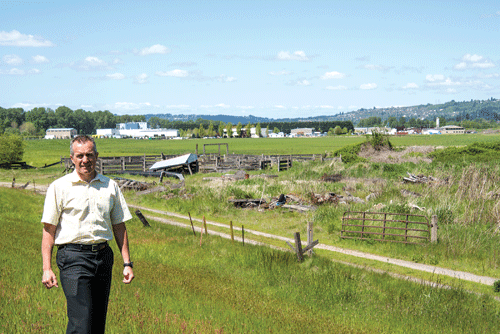Some markets have unique approaches to encouraging vendor participation. For example, the Ridgefield market includes a co-op table, where the market sells the produce and takes a 20-percent commission. The UGM includes a barter table where people can trade produce and crafts. Lorraine Williams, market master for the La Center market, said that half of their application fees and 20 percent of the stall fees go to charity – the market has raised almost $400 so far this year.
Many of the markets participate in the Women, Infants and Children (WIC), Senior Farmers Market Nutrition Program (SFMNP) and Supplemental Nutrition Assistance Program (SNAP, aka “Basic Food”). Working with SNAP recipients, said Marilyn Goodman, market coordinator for the Camas Farmers Market, is a good way to “educate people with lower income that farmers’ markets aren’t necessarily more expensive” and can provide healthier options than available at grocery stores. Goodman said that for the first two weeks of the Camas market this year, SNAP participants increased to 20, compared to 11 in the same time frame last year.
The Salmon Creek market is introducing Produce Pals for kids who attend the market. Funded by Kaiser Permanente, kids can join the Pals Club which gives them a $2 token each time they come to the market with which to buy their very own produce or nursery start.
Market organizers see a couple new pieces of legislation as “game changers” for farmers markets. For example, said Bob Mayfield, market master for the Ridgefield market, this year has been the first that the cottage food permit has come into play. The permit allows vendors to use their home kitchens to produce nonhazardous items, such as baked goods and jams and jellies, and sell them at farmers markets (no wholesale or Internet sales). Mayfield said three vendors in Ridgefield have obtained such a permit.
Timmerman said that markets across the state are waiting for the wine and beer sampling law to go into effect in August. This new law will allow markets to attract local breweries and wineries, and, said Timmerman, offer a “holistic shopping experience.”
Attendance at most markets is up – Timmerman said that every week she meets people who say they are attending for the first time, and Sunday attendance has “come up to par” with Saturday numbers. Susan K. Walters, market manager for the Battle Ground Village Outdoor Market, said they were at capacity for vendors (50+) every weekend – an improvement over last year. Goodman said that at the Camas market, during their third week last year 1,184 people attended, compared to 1,698 during the third week this year.
The vitality of farmers markets in Southwest Washington underscores the fact that people are taking an interest in learning where their food is coming from.
“That’s why farmers’ market organizers do what they do,” said Ann Foster, organizer for the Salmon Creek market. “We make connections between the producer and the consumer.”
{jathumbnail off}





